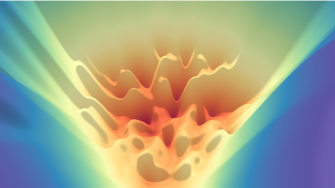
The challenge
Discovery and development of therapeutic leads is generally focused only on known molecular targets. This imposes a narrow, ‘target-biased’ approach exploiting only a small part of the universe of potential therapeutic opportunities. This contributes to severe bottlenecks in drug development, further exacerbated by the very high costs (~$200 million USD) and slow progression (1-3 years) of therapeutic lead discovery (Biomarker Development and Advanced R&D Landscape Overview 2019/Q1). New technology platforms are thus urgently needed to bring better therapies to patients, faster and more cheaply.
The solution
We have developed CellaSense; an outcome-orientated approach to therapeutic lead discovery using phenotypic analysis to identify novel, mechanistically unbiased, structurally diverse therapeutic leads. CellaSense also allows rapid identification of compounds that ‘pheno-copy’ known treatments, supporting accelerated identification of Bio-betters and Bio-similars.
The mechanistically and structurally agnostic nature of CellaSense expands the exploitable universe of therapeutic molecules to include targets not predictable with current biological knowledge, while also providing diversified starting points (Makush structures) for molecular derivatisation. Leveraging a strategy that progressively transitions from experimental to digital lead discovery, CellaSense constitutes a new paradigm that broadens, accelerates and de-costs therapeutic lead identification.
CellaSense “has the potential to change the way the community addresses drug discovery”.
Dr Ben Goult; University of Kent; Immunity, CVD, Wound-Healing & Oncology
CellaSense “has allowed us to identify leads that could not have been predicted or found from more conventional approaches. We recognise the power of your discovery and are confident that many others will benefit”.
Dr Thomas Cox, Dr David Croucher; Garvan Institute of Medical Research; Oncology & Fibrosis
The impact
CellaSense is currently based on a large-scale phenotypic database capturing effects of 115,000 structurally diverse compounds, including >470 known drugs-of-interest. CellaSense re-utilises this database as an extensible knowledge-based; a ‘map’ to detect novel phenotypes, to identify new compounds that ‘pheno-copy’ compounds-of-interest, and to define molecular mechanisms-of-action (MoA).
CellaSense has been used to identify several hundred lead compounds generating various desired outcomes, spanning control of cell architecture, cell signalling, cell adhesion and cell division. Thus, CellaSense can identify novel, structurally diverse compounds in an unbiased manner not restricted to a single target area.
Lead compounds identified by CellaSense have already been foundational in several independent drug development programs in Australia and the UK, giving rise to commercial and translational outcomes including patented derivatives and upcoming clinical trials. CellaSense was also recipient of 3rd Prize in the 2020 ShenZhen Innovation & Entrepreneurship International Competition.
Key people and partners
- Dr John Lock
- Professor Peter Gunning
- Professor Edna Hardeman
- Dr Nicole Bryce (Victor Change Cardiac Research Institute)
- Dr Qiao Qiao (UNSW Knowledge Exchange)
- Dr Tim Failes (Children’s Cancer Institute)
- Greg Arndt (Children’s Cancer Institute)
- Professor Benjamin Goult, University of Ken
- Associate Professor David Croucher, Garvan Institute
- Associate Professor Thomas Cox, Garvan Institute
